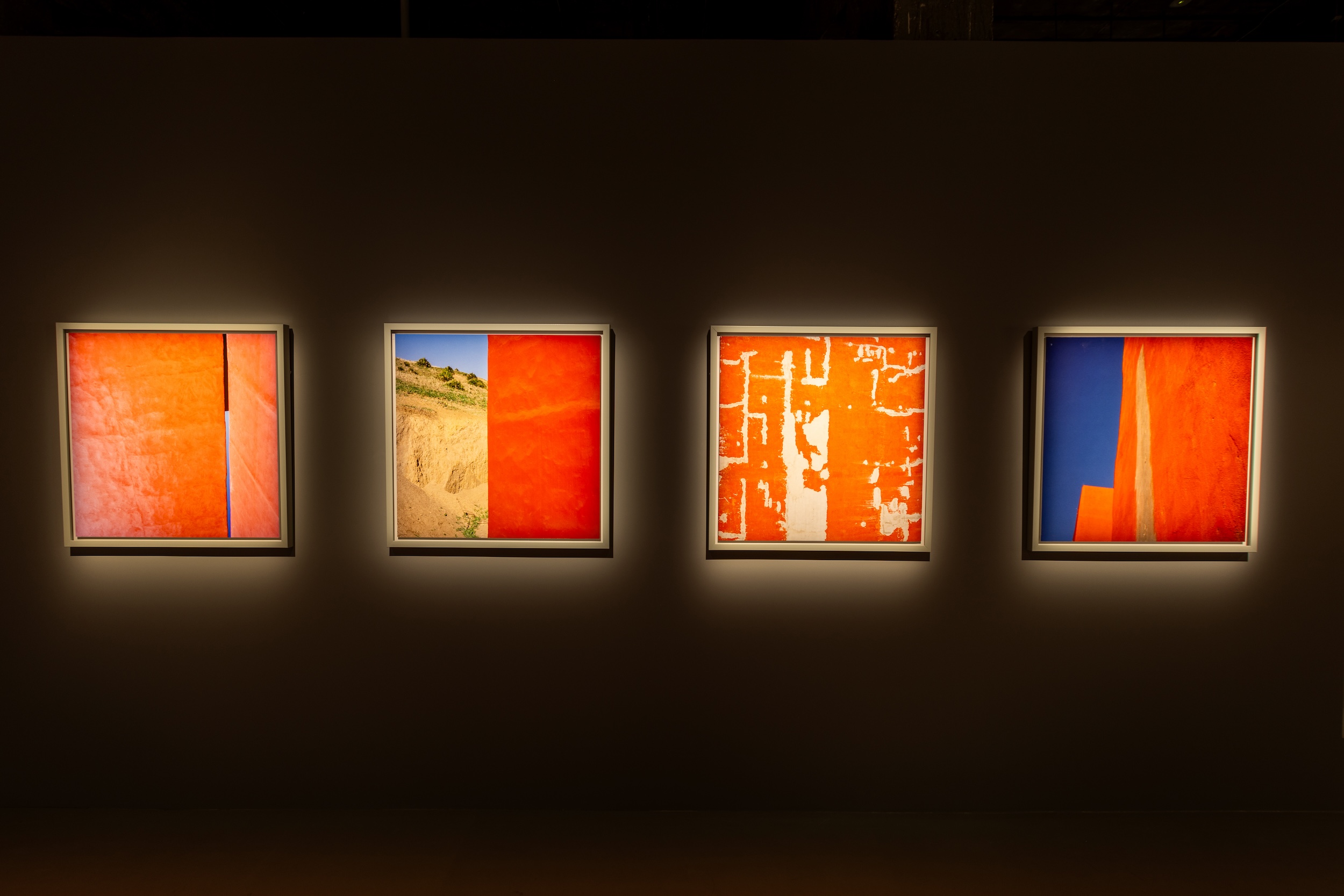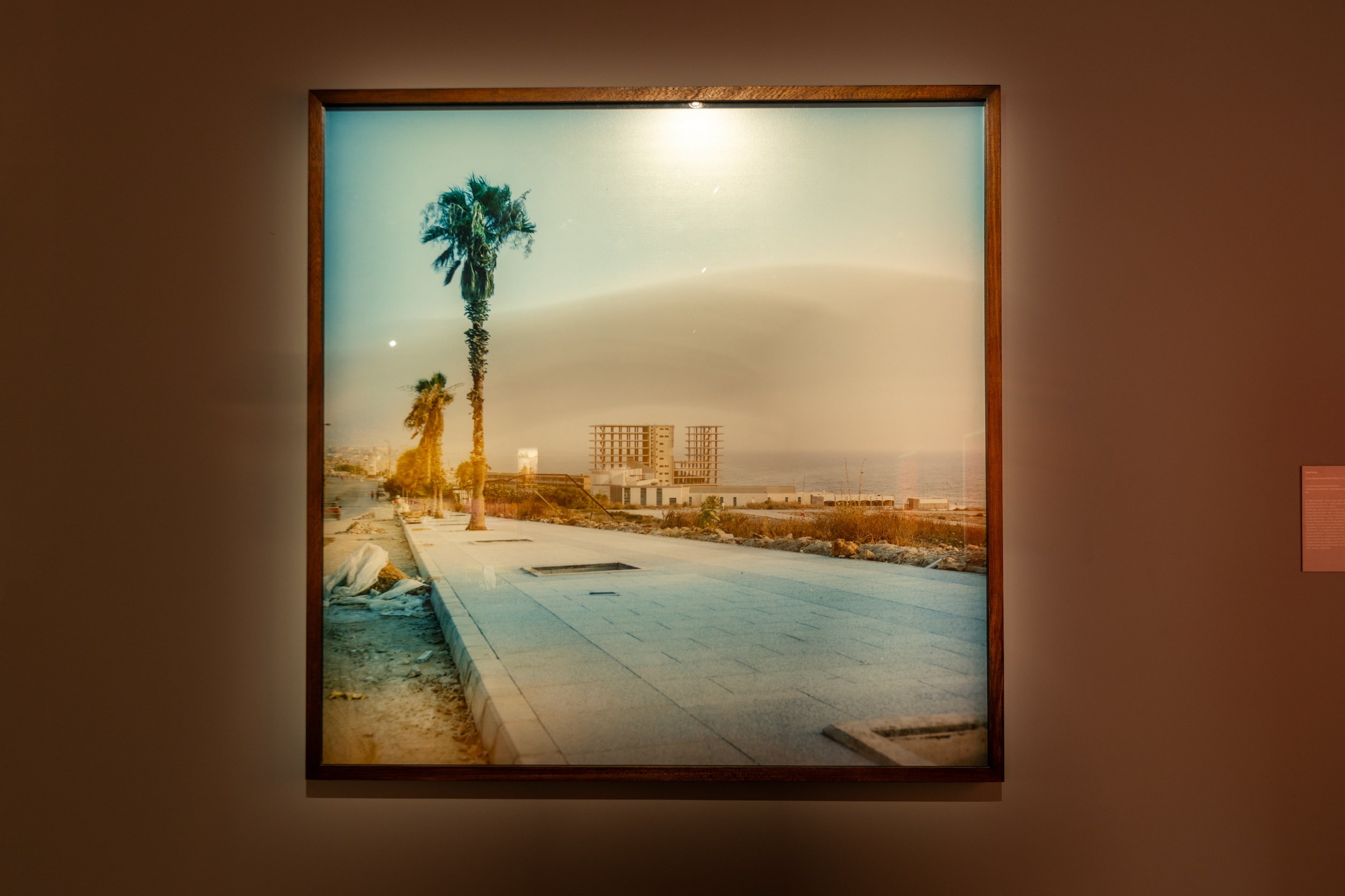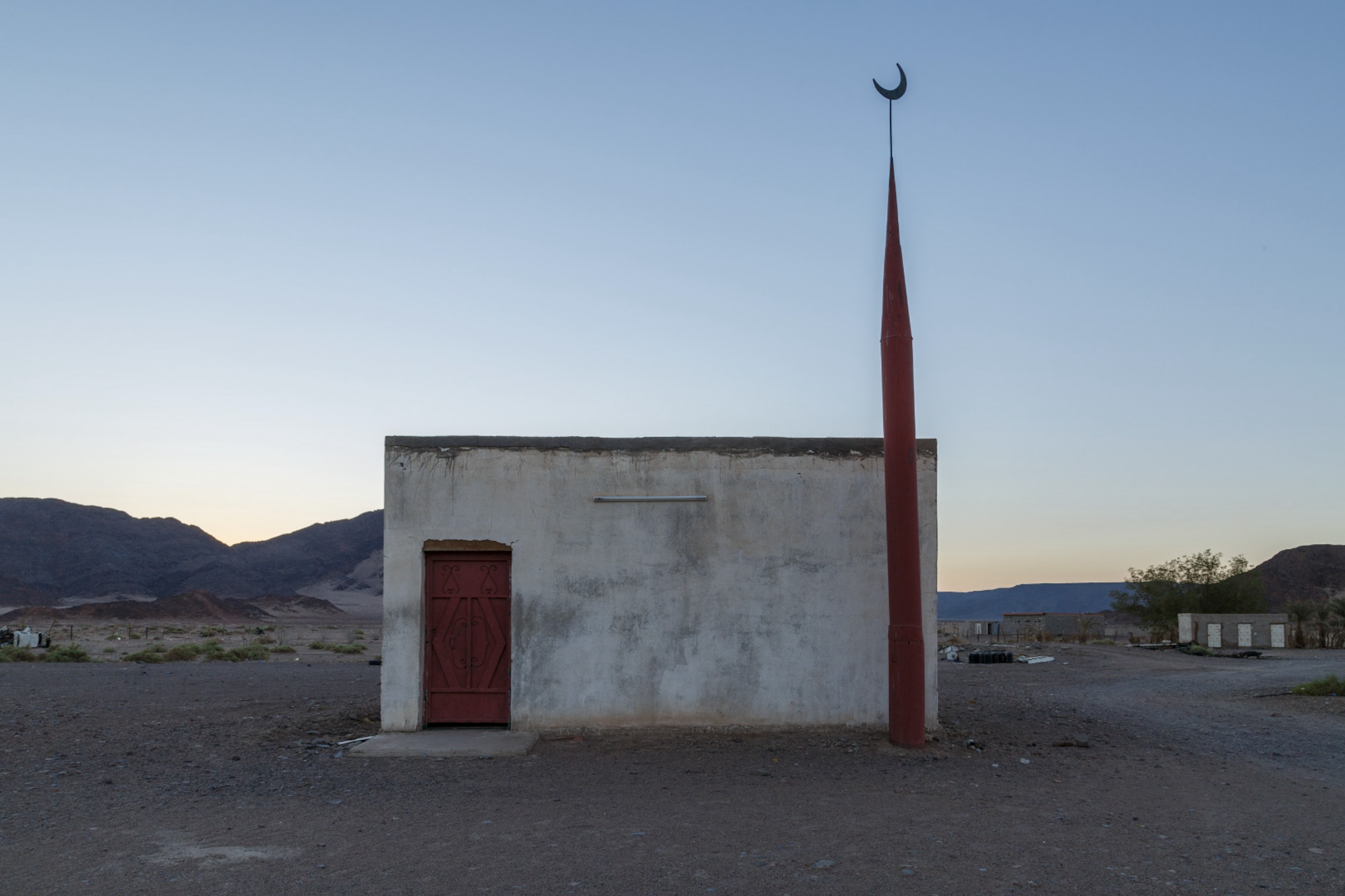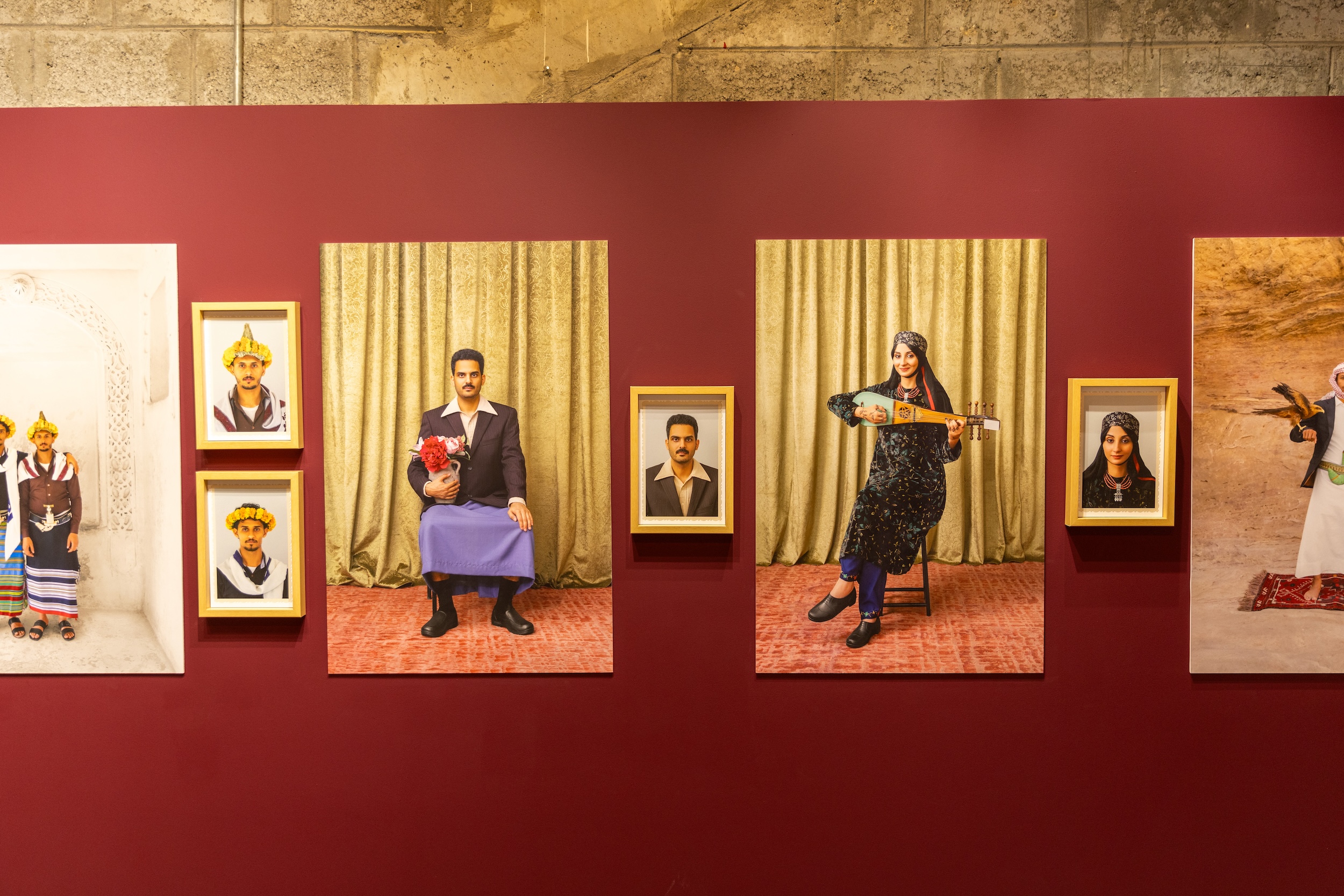Installation image of Refractions: Tasweer Project Awards, Gallery 46 at Katara Cultural Village
The third edition of the festival in Doha, Qatar is anchored by As I Lay Between Two Seas, which depicts identity as a fluid process
Tasweer Photo Festival specialises in West Asian and North African image-makers; it’s a noble cause. The industry has historically neglected this region’s photographers, platforming instead a Western lens upon the region and only furthering stereotypes or prejudice. The region has been consumed by conflict photography from Western media outlets, something Tasweer (Arabic for ‘photography’) makes clear is not its focus – bar the vital section on photography from Gaza this year. Instead, Tasweer develops sophisticated responses to life via local and diasporic photographers, exuding in some places joy, in other places grief and loss, but in every corner, honesty.
Its main exhibition this year As I Lay Between Two Seas draws from Stuart Hall’s understanding of “identity as a ‘production’ which is never complete, always in process”. The title borrows from a photographic series by Ali Al Shehabi and represents a marine metaphor that “speaks to the fluidity of selfhood. Like the sea,” reads the exhibition description, “identity is never still.” It’s a metaphor which fits the region well; a place which has seen perhaps the most movement, exile and shifting current of any region on earth. With a vast diaspora and a wide reaching refugee community, the exhibition pays homage to a process more often than not convoluted by fear and misunderstanding, and weaponised by every major political stage (only recently, at home, did Kier Starmer find himself following in Tory footsteps by scapegoating vulnerable asylum seekers and refugees yet again).


Tasweer is not without its growing pains, in its curatorial choices and the standard of imagery, though it can only be growing as quickly as its regional industry which has admittedly been booming in recent years, but struggled to find footing beforehand. As I Lay… curator Meriem Berrada makes it clear that Tasweer dedicates itself to working with framers and designers in the Gulf in a bid to support local industry. Berrada’s curation is a highlight, as well as exhibition design, with images backlit to energise them and draw viewers in, complemented by the dark gallery space.
Farah Al-Qasimi’s work from the UAE positively pops out in front of us in bright pinks and soft textiles, for example, whilst Taysir Batniji’s series is a more sombre meditation on exile from Gaza, displaying keys in a grid form with written captions from their owners, who were forced to abandon their homes in Gaza after Israeli bombardment. Other highlights were Ali Al Shehabi (Bahrain), Nadia Bseiso (Jordan), Reem Falaknaz (UAE), Hicham Gardaf (Morocco) and Ali Zarray (Egypt).
Joining the main exhibition, the Refractions: Tasweer Project Awards stands out as a display of the region’s talent, mostly emerging, forging a sense of excitement about the dynamism and diversity of West Asian and North African photography. The exhibition brings together images by 18 contemporary Arab photographers who won the 2023 and 2024 Tasweer Awards. Whereas Threads of Light: Stories from the Tasweer Single Image Awards, showcases 32 winning photographs from 2023 and 2024, representing photographers from 12 countries across the Arab world and beyond.

Once again, the exhibition design is inviting and immersive, allowing for projects such as Maeen Aleryani’s series In My Eyes, Memories from Yemen to shine. Aleryani creates a mobile photo studio that serves as both an archive and an activation of collective memory in Sana’a, Yemen’s capital. “In a country where traditional photography studios are disappearing and cultural spaces are shrinking due to the ongoing civil war, his work preserves visual memories for future generations” reads the description.
From the Iraqi and Lebanese diaspora, duo Tamara Abdul Hadi and Roi Saade reimagine cartographic traditions in the context of Iraq’s complex colonial history through the banks of the Euphrates river, in Chorography of the Euphrates. It is a quiet, calming and gentle depiction of Iraqi life along the river, filled with biodiversity and life, despite the dire ecological situation of the country and its rivers today. It’s a feeling echoed in M’hammed Kilito’s work Before It’s Gone which documents Morocco’s endangered oasis ecosystems. Both projects are a damning response to climate change and human activity in the region.
These shows, which end on 20 June, make up three of a whopping eight exhibitions set across Doha. Other important shows include Territories of the Instant, celebrating over three decades of work by Moroccan photographer and filmmaker Daoud Aoulad-Syad in Doha’s Katara district, and Obliteration – Surviving the Inferno: Gaza’s Battle for Existence, presenting powerful depictions of the ongoing war in Gaza, organised with Photo Humanity Grant.

Working with a smaller group of artists, Kane explains that the co-curators wanted to ensure “a diversity of perspectives and experiences in order to do justice to the notion of holding space. We wanted to really examine what this could look like and the different ways that communities show up for one another,” she tells me. Sifting through Thursday’s Child large roster of artists, Kane and Milner consulted with an expert panel, including Gem Fletcher and Lillian Wilkie, which helped them to ultimately shortlist the five artists included.
“We live in precarious times, and there are many valid reasons to feel angry, scared, and hopeless about the challenges ahead – for humanity, for society, and for the planet,” adds Milner. “But it’s also in times like these that we must remember the power of community and care.” For this reason, Holding Space became a method for the creatives involved to celebrate “all the many beautiful ways we show up for one another.”
Flores, Lawati and Raajadharshini are all continuing to expand their respective bodies of work, and explore new projects too. Whilst Raajadharshini is hoping to work with individuals in unique and often overlooked occupations, such as the several “dying handicraft clusters in India,” Flores hopes to secure funding to continue her project, and to print and gift the images to the women involved. She’s also hoping to curate an exhibition in Urubamba, Cusco. And Lawati is keen to return to Nepal to explore the skate and music scenes in Kathmandu, Nepal, “hoping that eventually, a book will come to fruition.”


